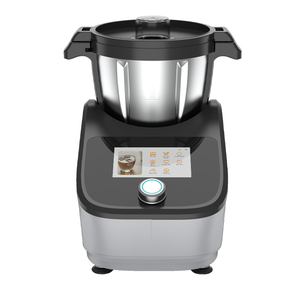
All categories
Featured selections
Trade Assurance
Buyer Central
Help Center
Get the app
Become a supplier

(13109 products available)



















































A Kitchenaid cook mixer is a versatile kitchen tool that comes in different types. They include;
Hand Mixers
The hand mixer is the lightest kitchen cook mixer. Users can only use it by hand. As a result, cooks use it to mix small amounts of dough or batter. It is also ideal for whisking eggs or blending sauce for one or two servings. The hand mixer is portable and easy to store. Also, it works perfectly for small baking tasks. It is also used to mix dry ingredients for cake or muffin batter.
Stand Mixers
The stand mixer is much heavier than the hand type. Businesses that buy hand mixer KitchenAid cookware online should be aware of its weight. The stand mixer can handle larger quantities of dough or batter. It is suitable for making bread, cookies, and cakes in larger batches. Also, the stand mixer is more powerful and has a variety of speed settings. Most KitchenAid stand mixers have a bowl lift or tilt-head design. The tilt-head design allows users to tilt the head to access the mixing bowl. It also makes it easy to attach or detach the bowl. The bowl lift design, on the other hand, lifts the bowl to the mixing head. Then, it lowers the bowl when the mixing process is complete.
Kitchen Aid mixers also come in professional models. They are built for heavy-duty tasks and have stronger motors. Professional KitchenAid cook mixers have larger bowls. They are ideal for commercial kitchens or heavy baking needs.
The kitchen cooking mixer has multiple uses. It can whip, beat, stir, knead, and emulsify food. The following are some of the common features of a kitchen cook mixer, as well as their functions:
Kitchen cook mixers are used in restaurants and commercial kitchens to prepare big quantities of food quickly and efficiently. The market for commercial kitchen mixers is expanding as a result of the hospitality sector's ongoing expansion. Restaurants, cafes, canteens, and other food service establishments are among them.
A variety of sectors, including bakeries, snack producers, and the dairy and beverage industries, all employ kitchen mixers to whisk, beat, and blend ingredients. Furthermore, kitchen mixers are frequently seen in catering companies that serve functions like weddings, business meetings, and private parties.
To meet different mixing demands, commercial kitchen mixers come in a range of sizes and capacities. They are heavy-duty equipment made to handle frequent use. Kitchen mashers are also employed in industrial kitchens across a variety of sectors, including bakeries, snack producers, and the dairy and beverage industries. Kitchen mixers are essential for efficiently and quickly preparing food in big quantities. They are needed equipment for any commercial kitchen because of their versatility and effectiveness.
Before stocking kitchen cooking mixers in a store, it's important to consider the best types that customers will be satisfied with. Here are more tips that will help retailers make the right purchase.
Q1: How much power does a kitchen mixer with a cooking function use?
A1: Power usage depends on the model and its features. Kitchen cook mixers typically range from 500 watts to 2000 watts. Higher models with more functions tend to use more power.
Q2: Are kitchen cooking mixers energy efficient?
A2: Cooking mixers with energy-efficient features and designs could help reduce energy consumption. Choosing models with the latest technology is a good thing to consider.
Q3: Is it difficult to clean a kitchen cooking mixer?
A3: No. Many kitchen cook mixers have self-cleaning features. In addition to this, most of them come with detachable parts that are simple to wash. Choosing gear-safe or nonstick bowls also makes cleaning easy.
Q4: What tasks can a kitchen cooking mixer do?
A4: A kitchen cooking mixer can handle many tasks, including chopping vegetables, kneading dough, whipping cream, and batter mixing. With added accessories like a meat grinder or pasta maker, the mixer performs even more functions.